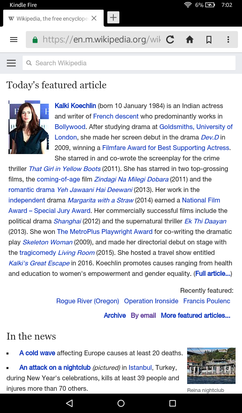| Amazon Silk | |
|---|---|
| | |
 | |
| Developer | Amazon.com |
| Initial release | November 15, 2011 |
| Engine | Blink, V8 |
| Operating system | Fire OS |
| Available in | English, Spanish, French, Italian, Japanese, Chinese |
| Type | Mobile browser |
| License | Freeware, proprietary |
| Website | docs |
Amazon Silk is a web browser developed by Amazon. It was launched in November 2011 for Amazon Fire and Fire Phone, [1] and a Fire TV version was launched in November 2017. [2] The addition of Silk to the Echo Show was announced at an Amazon event in September 2018. [3]
Contents
The browser uses a split architecture where some of the processing is performed on Amazon's servers to improve webpage loading performance. It is based on the open source Chromium project that uses the Blink and V8 engines.